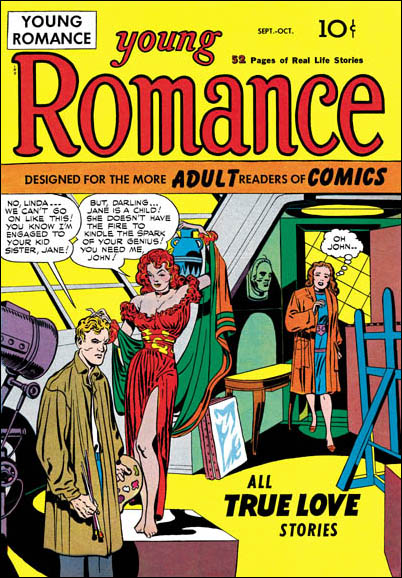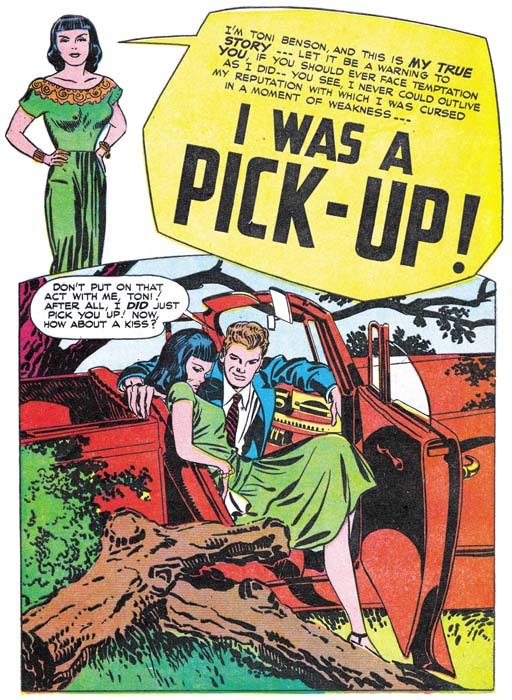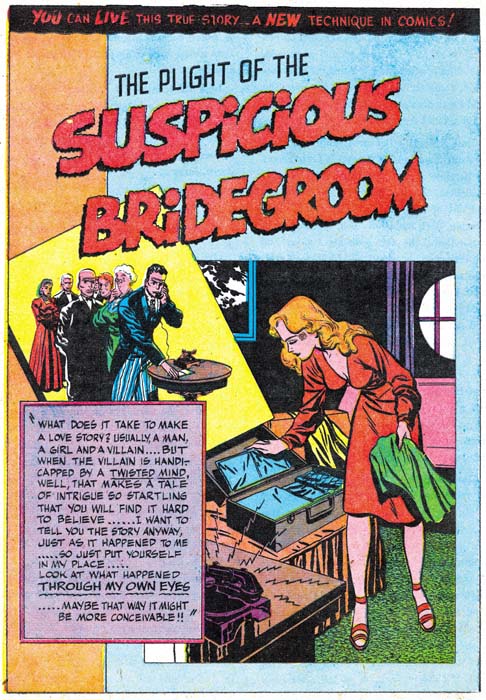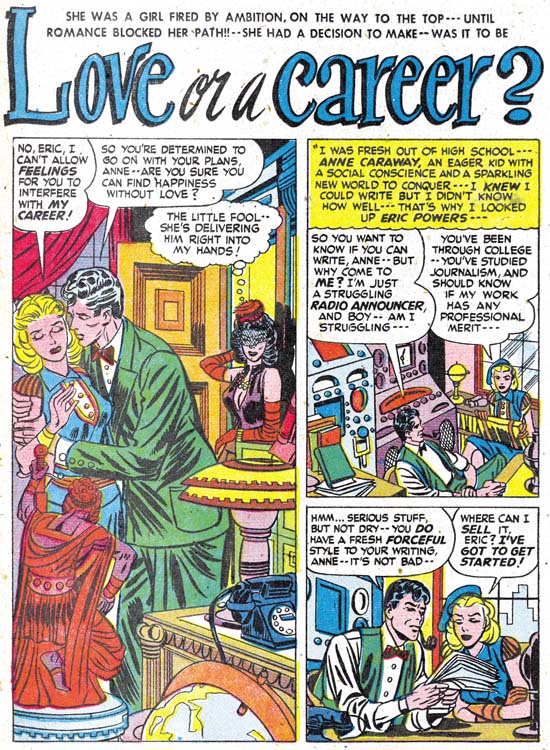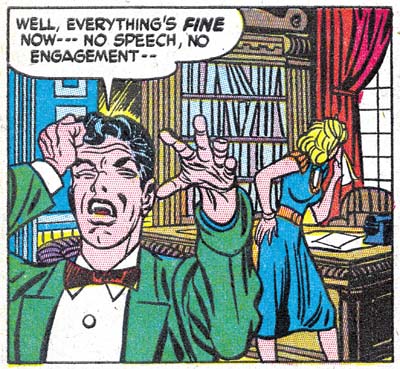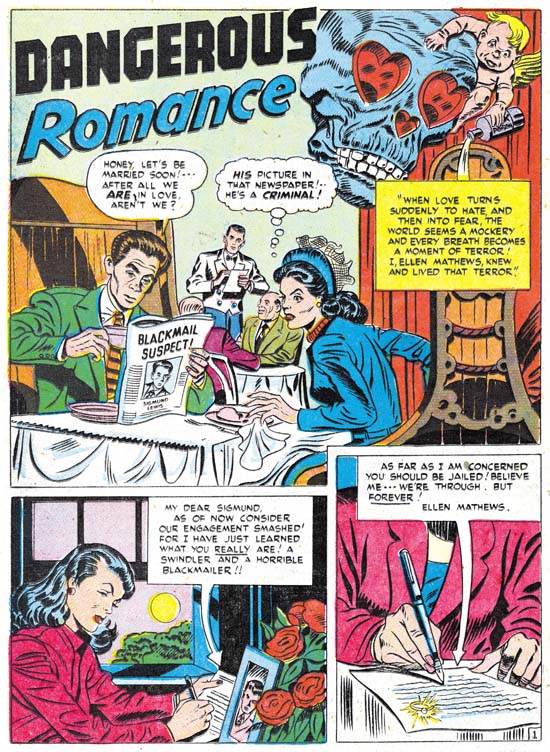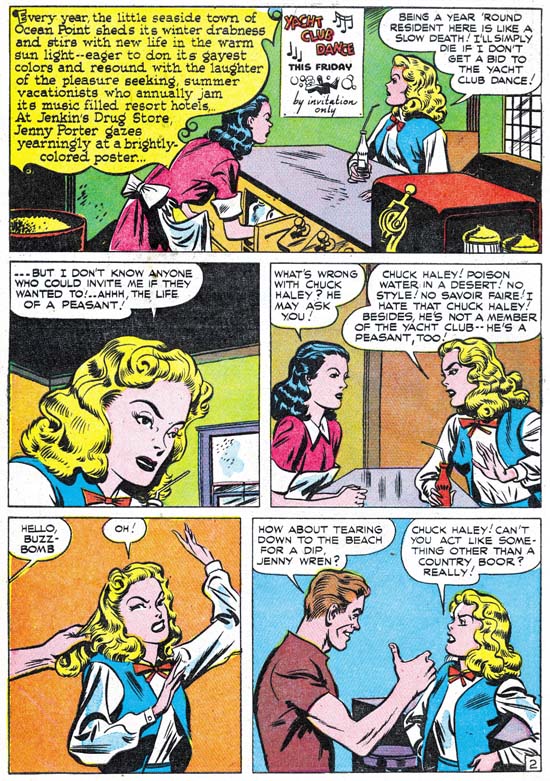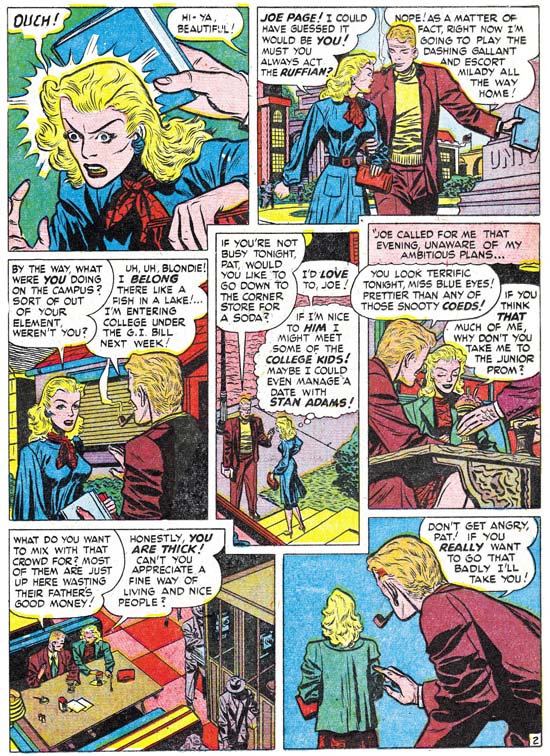In my last post for The Art of Romance I discussed the question of Kirby layouts. I gave some evidence to discount the use of Kirby layouts for some of the artists. However I also gave an example where I do believe Jack did provide layouts for another unidentified artist. As that serial post progresses I hope to show that while Kirby did work up layouts to be used by some of the lesser talents, it was not a practice used with most of the comic artists that worked for S&K. This is the opposite of the conclusion one would draw based on attributions given by comic art dealers. According to the dealers Kirby provided layouts for many artists working at the time. Of those artists purportedly working from Kirby designs, perhaps none is more surprising then Al Avison. I say surprising because Avison was not even working for S&K while he was doing the work for which Kirby had supposedly provided layouts. I would have thought that fact alone would have squelched any consideration of Kirby layouts but it has not.
�

Captain America #12 (March 1942) “Rozzo the Rebel”, art by Al Avison
Al Avison was one of the first artists that I discussed when I started this blog almost two years ago. Those posts were about the covers that Avison did for early Harvey comics (Speed #14, Speed #15, Speed #16, and Pocket #3. At the time Al was working with Simon and Kirby in the Timely bullpen. It is apparent that Kirby greatly influenced Avison yet Al’s work was still relatively crude. This changed dramatically and seemingly instantaneously when Simon and Kirby departed Timely to begin working for DC. I can only conclude that only when S&K were no longer an intimidating presence could Avison’s talent blossom forth. Avison became the chief penciller for Captain America and did some really nice stuff. Excluding Simon and Kirby, no other golden age artist did Captain America nearly as well as Avison. Unfortunately it will probably be a number of years before any of this material ever gets reprinted in Marvel Masterworks Golden Age series. However one story drawn by Avison has been reprinted in “Marvel Visionaries: Stan Lee” (“The Red Skull’s Deadly Revenge” from Captain America #16). Both Lee and Avison were on top of their form and this is the best Captain America story that I have ever read (again excluding those by Simon and Kirby). The splash to “Rozzo the Rebel” imaged above is typical of Al’s work on Cap. The nice design shows that Al learned a thing or two from Joe Simon as well. Avison emphasis for action and exaggerated perspective (particularly with Bucky) shows Jack Kirby’s influence. Still at this point in his career his assimilation of Jack’s style is not complete enough to mistakenly suggest Kirby layouts. Al’s style is a bit cartoonier then Jack’s, but I do not say that disparagingly as I am not one who believes that the more realistic comic book art is the better it is. My primary criticism of Avison’s Captain America work is that it tends to be overwrought. This is particularly true for the inking, but that was probably done by someone else, often Sid Shore.

Captain America #19 (October 1942) “On To Berlin”, pencils by Al Avison, inks by Sid Shores
Larger Image
One of the Simon and Kirby trademarks that was continued by Al Avison during his turn at Captain America was the double page splash. Avison may not have been in Simon and Kirby’s league, but he could still put together exciting splashes. What could be more thrilling then Captain America leading the invasion of Europe. Well perhaps having Captain America not only storming the beach but also rescuing an allied prisoner from torture as well. When this comic was created the invasion was almost as much a fantasy as Captain America himself. Not only had the American armed forces not yet really entered the European conflict, we had suffered some serious defeats in the Pacific theater. Even so “On To Berlin” certainly captured the American spirit at that time of crisis. I have not made a careful examination of these golden age comics, but it seems to me that Avison was the primary penciller for Captain America for 1942 after which he is replaced by Syd Shores. This is not supported by the GCD which shows Avison working throughout the war years. Frankly my policy concerning the GCD is trust but verify. Since I am not able to verify some of these attributions at this time, I am not inclined to trust them. Atlas Tales shows Avison last work on Cap has a cover date January 1943. In the past I have found Atlas Tales a more reliable source and in this case they seem to be in agreement with my own understanding. Avison’s disappearance from Timely can most likely be explained as his being drafted for service, the fate of many comic book artists at that time.

All-New #13 (July 1946) “Crime at Floodtime”, art by Al Avison
Larger Image
Atlas Tales shows Avison returning to do work for Timely after the war. But he does not resume being the principal penciller for Captain America nor does he seem to be working exclusively for them, I think he actually did more post-war work for Harvey. Unfortunately the Harvey comics are not covered by Atlas Tales and my own resources are spotty. My impression is initially Al provided work for the Green Hornet and Boy Heroes. The image of the double page splash form All-New #13 that I show above combines both, the Green Hornet story is sandwiched between some Boy Heroes panels. I am unclear what is meant by “a radio-comic feature via television” but it did provide an excuse for a little cross-over of the two features.
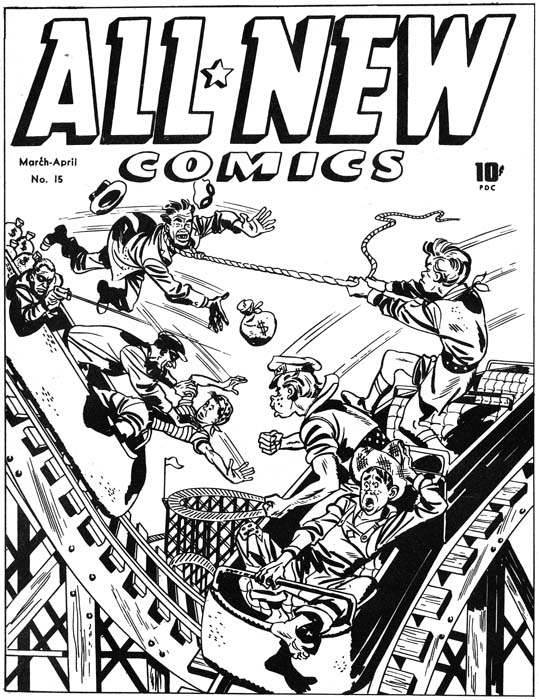
All-New #15 (March 1947) art by Al Avison
Harvey’s All-New title suffered from the same post-war comic glut that doomed Simon and Kirby’s Stuntman and Boy Explorers. The final issue of all three would be black and white copies reduced in both size and contents. As far as I know, All-New #15 was the only time the Boy Heroes appeared on a cover. Surprising they are not present in any of the inside stories. It is Boy Heroes work like this cover that drives the suggestion of the use of Kirby layouts. Although I disagree with the conclusion I perfectly understand what it is based on. This covers has a lot of the action and exaggerated perspective that is so typical of Jack Kirby. However Kirby layouts are not the only explanation, another is simply that Avison had studied and was influenced by Jack’s style. Although parts of this particular work look very Kirby-like in layout, as an ensemble the cover suggests the influence of Alex Schomburg as well.
It is important to realize that although All-New, Stuntman and Boy Explorers were all published by Harvey, Al Avison was not working for Simon and Kirby. All-New included Joe Palooka and Green Hornet stories as well as the Boy Heroes, features that were not produced by Simon and Kirby. Nor did Al Avison’s art appear in Stuntman and Boy Explorers that were Simon and Kirby productions. Boy Heroes was part of the kid gang genre that Jack seemed so fond of, but there can be no question of any direct involvement of Joe or Jack in the creation of the Boy Heroes as they both were in military service when the feature started.
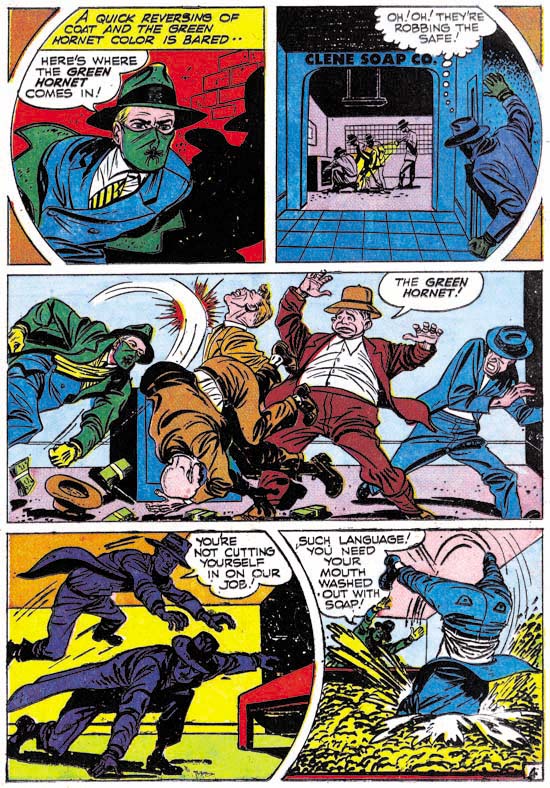
Green Hornet #35 (September 1947) art by Al Avison
Most of the so called Kirby layouts claims are for Boy Heroes art, but Jack Kirby’s influence on Avison can also be seen in his Green Hornet work as well. The fight scene in the third panel is a great example of this. Note also the use of semicircular panels, this along with circular panels were devices that Simon and Kirby developed for Captain America but were used infrequently by S&K at the time that Avison did this art.

Unpublished Boy Heroes, by Al Avison
Frankly although I have begun to discuss the issue of Kirby layouts and will continue to do so, I do not expect mass conversions to my way of thinking. In the case of Al Avison, Joe Simon’s art collection contains what I would describe as a smoking gun that as far as I am concerned lays this issue to rest. These are two unfinished pages of story art penciled by Avison. The one I image above is unmarked but appears to be a Boy Heroes story. Note the circular panel and a figure drawn that could be mistakenly thought to be based on a Kirby layout. The rest of the page has no art, just the panels. It would seem that Al’s working method was to initially pencil out the page as three long panels. These may then be broken up into smaller panels as the work progressed. In the image above you can see that the second tier has already been marked off as two panels while the third remains undivided. What is not found anywhere on this page are layouts of any kind. There are a few pencil marks in the second panel but these would hardly be described as layouts. I am sure Avison knew what he had begun to draw but they certainly do not represent layouts done by Kirby. As meager as these few pencillings are, the rest of the panels are completely blank.

Unpublished comic art, by Al Avison
I do not know what feature the other unfinished page was meant for. I do not believe it was a Boy Heroes page since the leading characters seem to be a man (Dan), a woman (Diane) and a gorilla (Bomba). It is even a better example of Kirby-like art. Dan’s slug is the most Kirby-like I have ever seen done by an artist other then Jack himself. Also some excellently done exaggerated perspective. Note Diane’s pose as she runs into the room, practically as well executed as Kirby could have done it. But once again the lower two panel tiers are completely blank, no sign of any use of layouts.
In the past I have used Photoshop adjustments to bring out things that had been erased, but when I use that technique here on these two pages of art nothing surfaces. The only conclusion to be reached is that these pages were not done using layouts. If Avison could be so effective without Kirby’s help here, there is no reason to believe any of the other art he produced at this time required Kirby layouts either. Add to that the question of why Jack would provide designs for an artist who was not even working for him? Certainly Al’s earlier work on Captain America showed he did not need such help.




